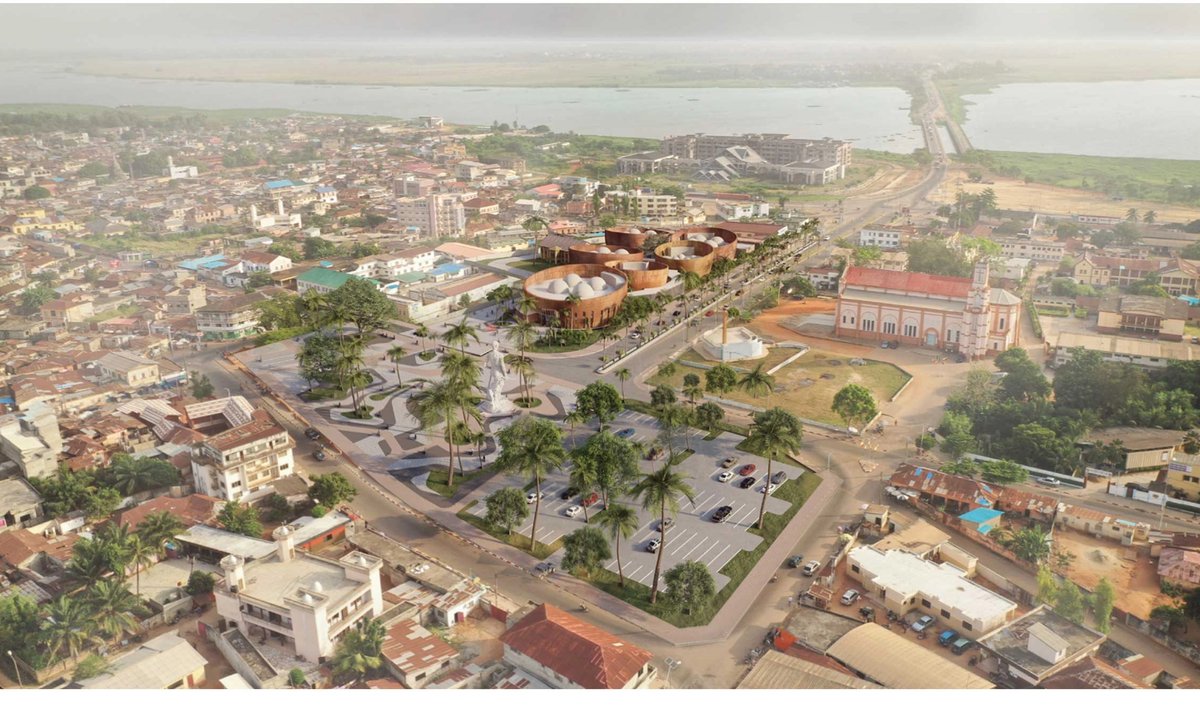The Republic of Benin, which is making its debut appearance at the Venice Biennale this year, is turning to culture as part of a strategy to spur economic growth. Its government is building four new museums in a range of locations and a cultural quarter in the largest city, Cotonou, in addition to boosting investment in arts education.
A museum in the coastal city of Ouidah, from where the last recorded shipment of slaves to the US departed in 1860, will explore the history of slavery. It is scheduled to be completed at the end of this year, the first of the four new museums slated to open over the next five years in Benin. Maison de la Mémoire et de l’Esclavage aims to tell the history of slavery from African, American and Caribbean and European perspectives, says Alain Godonou, the director of museums for the national agency of heritage and tourism.
Between 2016 and 2026, the Benin government plans to invest €250m, with the goal of making culture the economy’s second pillar after agriculture. In addition to building museums, the government’s focus is on preserving non-material heritage, increasing cultural tourism and offering financial incentives to private investors.
Promoting the arts goes beyond fostering a sense of national identity, says Babalola Jean-Michel Abimbola, the country’s minister of culture. “It’s a fight against poverty, allowing us to create jobs and build a better economy.”
Construction began last year on a new cultural quarter in the centre of Cotonou, known as Le Quartier Culturel et Créatif, which is to host a contemporary art museum, a sculpture garden, a Franco-Beninese cultural institute, a concert arena, commercial galleries and a crafts village showing local crafts and heritage.
The Musée d’Art Contemporain de Cotonou is envisaged as a platform for both international and domestic talent and the government hopes it will be “the biggest, most important contemporary art museum in Africa”, Abimbola says.
Further plans include the Musée des Rois et des Amazones du Danhomè in Abomey, where visitors will in future be able to explore the 300-year history of the kingdom of Dahomey. Musée International du Vodun, located in the capital, Porto-Novo, aims to rehabilitate the image of a much-maligned and globally poorly understood Indigenous religion, also known as Voodoo.
The government hopes that the new museums will build on the success of a 2022 exhibition, where 26 recently repatriated royal artefacts went on display in the presidential office. These were shown alongside the contemporary exhibition, Art of Benin From Yesterday and Today: From Restitution to Revelation.
The show drew more than 230,000 visitors in the three months it ran, 90% of whom were citizens of Benin, Godonou says. Previously, Beninese museums attracted an average of 40,000 visitors annually. While he concedes it may be too ambitious to expect to replicate the 2022 success annually, he believes a target of 100,000 would be sustainable.
Last year, the government launched an Agency for the Development of Art and Culture. The ministries of tourism and finance are also seeking to introduce tax relief policies for the cultural industries.
The kind of publicly funded, government-led major museum projects Benin is undertaking have little precedent in Africa. South Africa’s Zeitz Museum of Contemporary Art Africa (see below) is a joint venture between the Victoria & Albert Waterfront development and Jochen Zeitz, the chief executive of Harley Davidson. Nigeria’s Museum of West African Art in Benin City is owned by the Mowaa trust, a private, not-for-profit initiative. In Morocco, the Mohammed VI Museum of Modern and Contemporary Art, Rabat is a royal initiative, while Marrakech’s Museum of African Contemporary Art Al Maaden (Macaal) is funded by Othman Lazraq and his father, Alami, two of the wealthiest men on the continent.
The Benin government’s plan does, however, envisage involving the private sector. By showing entrepreneurs that people in the country are interested in art, Abimbola hopes to spark business interest. In some parts of Cotonou that is already happening. Septième Gallery, which already had a space in Paris, launched in Cotonou in 2022. Last year, the gallery was part of the inaugural Cotonou Gallery Weekend, alongside a commercial Beninese gallery, Borna Soglo, as well as art centres such as Le Centre and Kulturforum Sud-Nord.
Expanding education and training
Investment in arts education and professional training is also increasing. Sèmè City, a government-backed development project, has revealed plans for a new Africa Design School campus located in Ouidah. The school launched in Cotonou in 2019 in partnership with L’École de Design Nantes Atlantique and has since added a masters programme and an exchange programme, in which 11 French students participated in 2023. The campus in Ouidah aims to accommodate 30,000 students from 2026.
Last year, the École du Patrimoine Africain, which trains heritage professionals, celebrated its 25th anniversary. When it began, only 5% of the people working in Beninese museums were trained in heritage preservation. Now the figure is 80%, and its work has gained relevance as African countries begin to recover looted treasures from Western museums.
In the past five years, the organisation has launched a bachelor’s programme, begun training cultural journalists and launched online bilingual training for professionals around the world. Students from the school are now involved in the museum projects at Abomey and at the Vodun museum, says the director, Franck Ogou. Benin, he says, is one of the “very few countries in Africa that put arts and culture at the heart of policy”.

